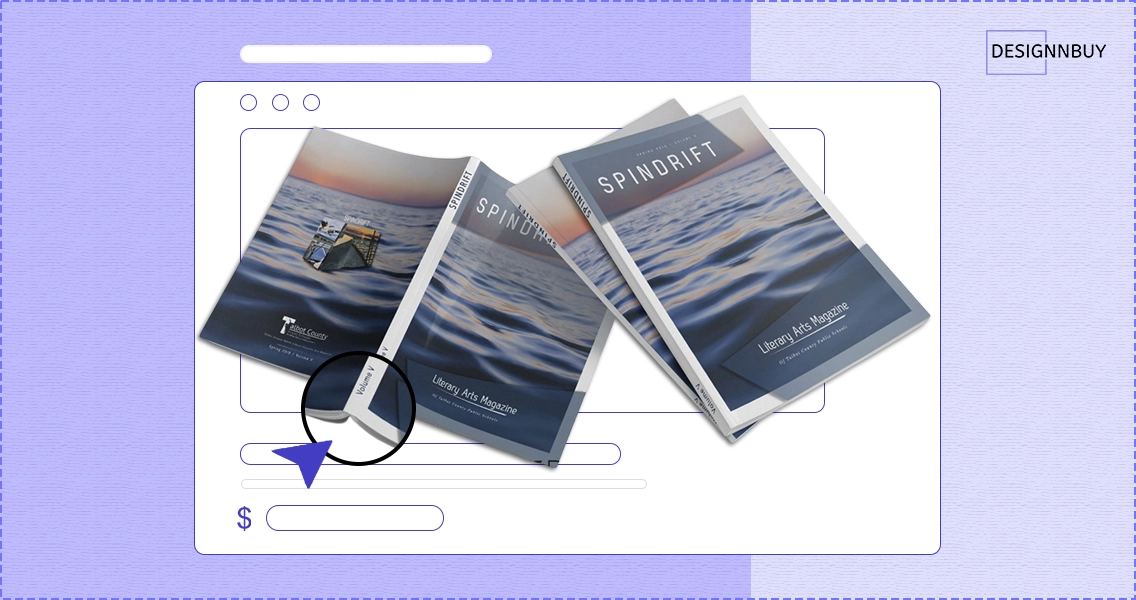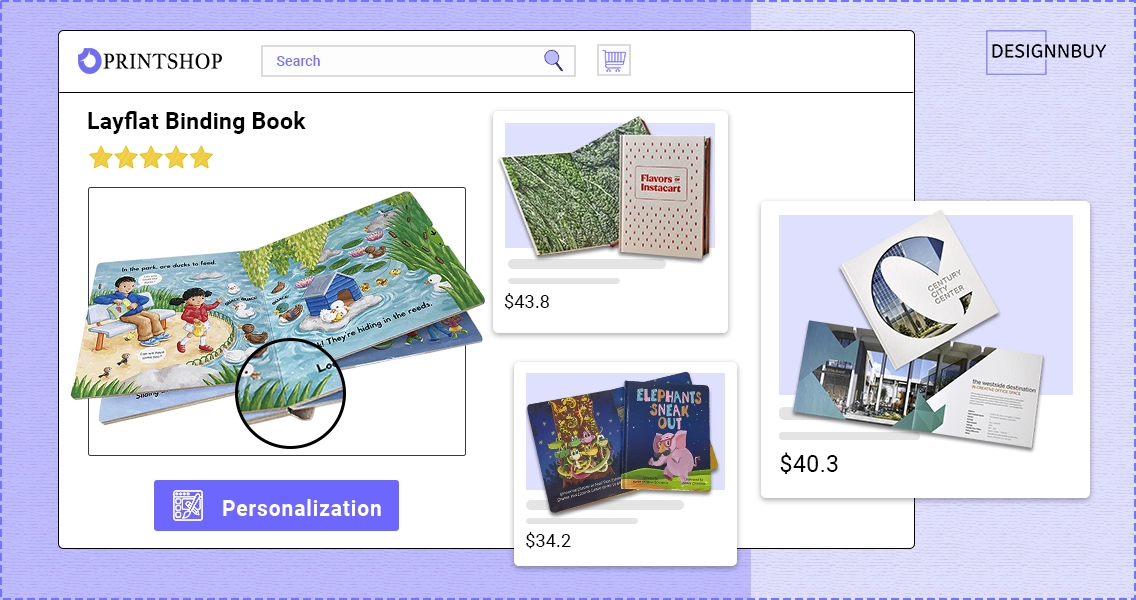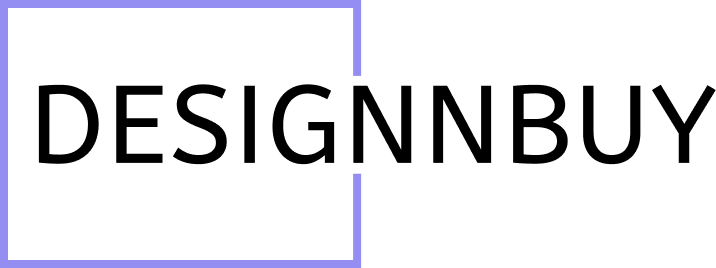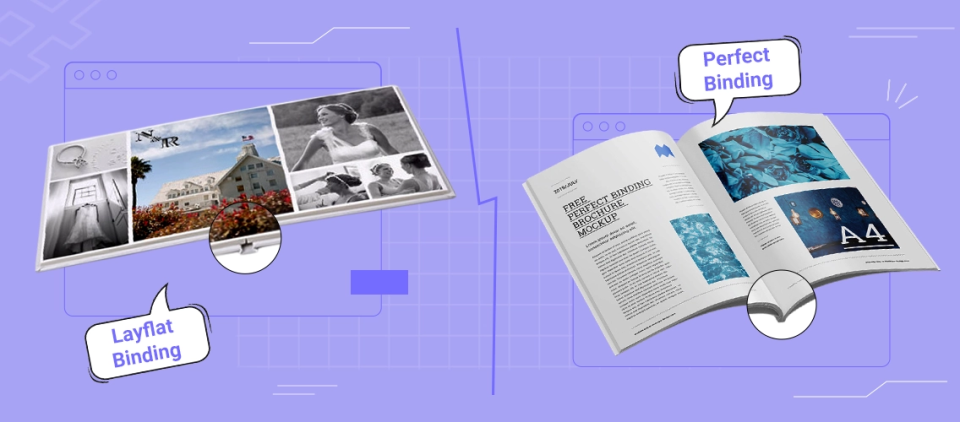Every book you print, whether it’s a photo book, catalog, or corporate report, is an opportunity to impress your customers. It is also a chance to grow your business.
Perfect binding and layflat binding aren’t competitors, they’re two ways to make your books and catalogs shine. Choosing the right binding options ensures your products look professional, feel premium, and delight clients every time.
In this blog, you will learn how perfect binding and layflat binding work, understand the benefits of each for your business, and discover which projects they are best suited for.
From affordable, sleek options to premium, high-end finishes, this guide will help you offer the right choice for every customer and maximize the value of your print services.
Let’s explore layflat binding vs perfect binding and see which works best for different projects.
Table of Contents
What is Perfect Binding?
Perfect binding is a widely used binding style for softcover books. It’s ideal for comic books, coffee table books, magazines, catalogs, manuals, technical guides, and any publication with around 64 pages where affordability matters.
If your customers want professional-looking books at an affordable price, this method is ideal.

Here’s how it works:
Perfect binding creates a professional, retail-ready book at an affordable cost; ideal for novels, catalogs, corporate reports, and personalized books where a clean appearance matters more than a flexible spine.
- Page Preparation: Pages are stacked in order and trimmed so the edges are perfectly even.
- Spine Gluing: The spine edge is roughened slightly and coated with a strong adhesive.
- Cover Attachment: A softcover wraps around the pages, and the glue holds it securely to the spine.
- Finishing Touches: The edges are trimmed again for a clean, square look, and any spine printing is added.
Why Offering Perfect Binding Benefits Your Business
Perfect binding remains a staple in the printing world and for good reason. Adding it to your catalog benefits your business by:
- High demand and familiarity – customers know and trust this format for novels, catalogs, and reports.
- Affordable production – low per-unit costs make it ideal for bulk orders and budget-sensitive clients.
- Scalability – works seamlessly for short runs or mass production.
- Shipping-friendly – lightweight and slim, which helps your customers save on fulfillment.
- Versatile applications – suitable for a wide range of projects, from self-published books to corporate materials.
Things to consider when offering Perfect Book Binding
Perfect bound book printing is popular, but it’s not without trade-offs. Keep these points in mind when adding it to your catalog:
- No layflat capability – pages won’t stay open flat, which can frustrate end users.
- Durability limits – spines may crack with heavy use, especially for reference-heavy books.
- Page count matters – works best for 40+ pages; thinner books may feel flimsy.
- Not ideal for premium projects – avoid recommending it for photo-heavy keepsakes or heirloom-quality books.
Tips for success:
- Recommend page counts of 40+ for a solid feel; very thin books may feel flimsy.
- Offer matte or glossy covers to enhance the perceived quality.
- Highlight spine printing for customers ordering multiple copies, they love the shelf-ready look.
We usually recommend perfect binding for novels, catalogs, corporate reports, or any project where affordability and a clean look matter more than flexibility.
What is Layflat Binding?
Layflat binding is a premium bookbinding method that allows pages to stay completely flat when the book is open.
This makes it perfect for photo books, portfolios, catalogs, and any project where a seamless spread is important.
Layflat binding is durable, provides a high-end look, and enhances the reading or viewing experience, making it ideal for premium projects where presentation matters.

Here’s how it works:
Layflat binding allows books to open completely flat without damaging the spine. Different methods achieve this, depending on the type of book and desired finish:
- Smyth Sewn Binding: Pages are grouped into signatures, sewn together, and glued into the cover for a flexible, fully open spine.
- Thread Stitch Binding: Extra-reinforced sewing for heavy-use books like portfolios or cookbooks.
- Ota-Bind: Pages glued to a flexible backing for a smooth layflat feel without sewing.
- Coil/Wire-O Binding: Punched pages bound with a coil or wire, allowing 360° rotation, ideal for manuals and workbooks.
- Board Book Binding: Thick, laminated pages bound to a durable spine, common for children’s books or keepsakes.
- Saddle Stitch: Folded pages stapled at the center, best for thin booklets or short runs.
Why offering layflat binding benefits your business
Adding layflat binding to your catalog does more than impress customers, it strengthens your business:
- Premium upsell opportunity – higher per-unit cost lets you charge more and increase margins.
- Stronger customer loyalty – clients appreciate durability and usability, making repeat business more likely.
- Market differentiation – not every print provider offers layflat, so it helps you stand out.
- Broader project range – from wedding albums to corporate lookbooks, you can handle high-end requests.
- Brand authority – positioning yourself as an expert with premium solutions builds trust and credibility.
Things to Consider When Offering Layflat Binding
Layflat binding delivers premium quality, but it comes with considerations you’ll want to manage for clients:
- Higher production costs – materials and processes are more expensive than perfect binding.
- Thicker, heavier books – impacts shipping costs and fulfillment logistics.
- Longer production times – sewing or specialty binding can extend turnaround.
- Niche appeal – not every customer needs or will pay for premium durability.
Perfect Binding vs Layflat Binding: Quick Comparison for Print Businesses
Here’s a quick way to show your customers the differences:
Feature | Perfect Binding | Layflat Binding |
Spine Type | Adhesive glue only | Stitched, threaded, or flexible adhesive |
Durability | Moderate | High |
Layflat Capability | No | Yes (180 degrees) |
Cost | Lower | Higher |
Thickness/Weight | Slimmer, lighter | Thicker, heavier |
Best For | Novels, catalogs, paperbacks | Photo books, cookbooks, premium books |
Customer Experience | Standard, affordable | Premium, functional, long-lasting |
When to Choose Perfect Binding
Perfect binding is a versatile and cost-effective choice for various printing projects. Consider recommending this binding method in the following scenarios:

Books with Moderate to High Page Counts: Perfect binding is ideal for books ranging from 20 to several hundred pages. It’s commonly used for novels, catalogs, and corporate reports.
Professional Presentation: The clean, square spine of perfect binding allows for easy shelf identification and a polished look, making it suitable for retail-ready publications.
Budget-Conscious Clients: For clients seeking a professional appearance without the higher costs associated with hardcover binding, perfect binding offers an affordable alternative.
Short-Run and On-Demand Printing: Perfect binding is well-suited for short-run and print-on-demand projects, providing flexibility and cost savings for small to medium print runs.
Light to Moderate Handling: While perfect binding offers a professional finish, it’s best suited for books that won’t undergo heavy handling, as the spine may not withstand frequent use as well as other binding methods.
By understanding these scenarios, you can effectively recommend perfect binding to clients, ensuring their projects are both visually appealing and cost-effective.
When to Choose Layflat Binding
Layflat binding is a premium choice designed for durability, usability, and a high-end feel. Consider recommending it in the following scenarios:

Photo-heavy books: Wedding albums, travel books, portfolios, and art books look best in layflat form. Images can spread across two pages without losing details in the gutter, creating a seamless visual presentation.
Cookbooks, manuals, and workbooks: These books are meant for frequent use. Lay flat binding allows them to stay open on a counter, desk, or workspace, making them practical and user-friendly.
Premium and keepsake projects: Clients who want a long-lasting, high-quality product, like commemorative albums or coffee table books; benefit from the durability and premium feel of layflat binding.
High-end market positioning: Layflat binding enhances perceived value. It justifies higher pricing and positions the book as a luxury or professional product.
Upsell opportunity: Offering layflat binding gives you a chance to provide a premium upgrade, increasing your average order value and satisfying clients who want something special.
In short: Layflat binding is ideal when functionality, aesthetics, and longevity are priorities. It’s the go-to choice for premium books that are meant to impress, last, and provide an exceptional user experience.
Cost Considerations
Let’s be honest binding choice isn’t just about looks or durability. It directly impacts production costs, profit margins, and how you position your services online.
Perfect Binding Costs: This is the more budget-friendly option. Per-unit pricing drops significantly at higher volumes, making perfect binding ideal for mass production runs. If a client wants something professional without overspending, this is usually the first choice.
Layflat Binding Costs: On the other hand, layflat binding requires more materials and labor, which raises the per-unit price. But here’s the upside: it transforms the book into a premium product. Customers often see the difference immediately and are willing to pay more for the durability and usability it provides.
For print business owners, this opens the door to serving two clear customer groups:
- Cost-conscious clients who need affordability and scalability.
- Premium-focused clients who want to offer their customers long-lasting, high-value books.
By offering both, you position your print shop to handle any type of project; whether the customer is working with a tight budget or aiming for a luxury finish.
Which Binding Types Should You Offer Online?
Here’s the bottom line: offer both.
- Perfect binding gives you the affordable, mass-market product that most customers want.
- Layflat binding gives you the premium option that sets your services apart and commands higher margins.
When customers see both choices, it positions your print business as flexible, professional, and knowledgeable. Plus, it allows you to upsell; someone who came in looking for a standard bound book may upgrade to layflat once they see the difference.
Conclusion
Perfect book binding and lay flat book binding aren’t competitors, they’re two binding types in our toolkit as print providers.
- Perfect binding = affordable, sleek, and professional.
- Layflat binding = durable, premium, and functional.
By offering both binding styles in your online catalog, you give customers the power to choose the option that fits their project and budget best. And when you guide them through that choice with confidence, you position your business as more than just a printer; you become their trusted partner.
Simplify your workflow and impress your clients with DesignNBuy’s booklet design software. We are offering both perfect and layflat bindings.
Let customers personalize their booklets online, and grow your revenue; all from one powerful platform!
Simplify booklet orders with Booklet Design software
Handle more orders, impress more customers, and grow your business without the hassle
FAQs
What’s the main difference between perfect binding and layflat binding?
Perfect binding uses adhesive only, while layflat binding uses stitching or flexible adhesive that allows the book to open flat.
Which lasts longer: perfect bound or layflat?
Layflat, especially when sewn. It’s built for durability and heavy use.
Is layflat worth it for photo books?
Absolutely. Customers love that their photos aren’t lost in the gutter of the spine.
Which is better for bulk orders?
Perfect binding is more efficient and cost-effective for bulk printing.
Should I offer both perfect and layflat binding?
Yes. Offering both makes your catalog stronger and lets you serve different customer needs.

